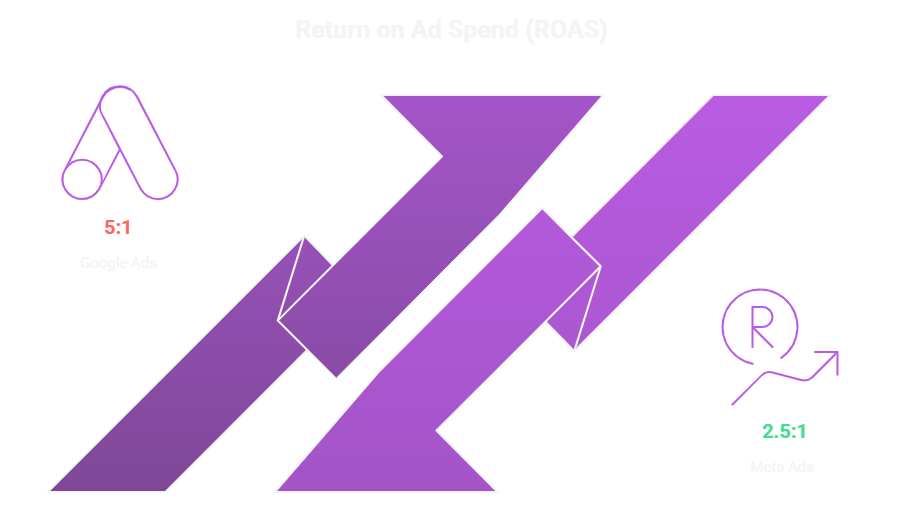Meta Ads vs Google Ads: The Ultimate 2025 Digital Advertising Showdown

Just think of this scenario, you stand among the cereal selection in the grocer and feel flooded with 847 different breakfast ideas, and then the warning vibrates in your cell phone, keeping an advertisement in time on that brand-new flavour protein granola you were about to think of.
The power of current online marketing, but here is what goes wrong in the story plot: the ad that can have been produced by two different worlds, both with their super-strengths, vulnerabilities and strong opinions on how to take your money away.
Greetings to the never-ending battle royale of digital ads comparison 2025, the Meta Ads and Google Ads Spaces. It is like comparing Batman to Superman. They are all so powerful; they have their dedicated fan base, and not to mention, you may end up saving (or killing) your marketing budget with either of them, depending on how you use them.
I am voted and asked to put out the bull Regarding any marketing, in this case, regarding Meta ads, aka Facebook advertising or Google Ads. I am a C-level digital marketing person who has been waist-deep (knee-deep is too kind a phrase) in the trenches long enough to know that Google AdWords (remember when it was called AdWords?) cost a fraction of the price per ad and that Facebook advertising cost pennies Since the choice of two such different platforms cannot possibly be the case of the choice of your design favourite colour, it is the case of the choice of your understanding of two wildly different methods of how to capture the human eye and ear in the hyperconnected world of today where we scroll and scroll and scroll to death.

The Fundamental Philosophy War: Intent vs Interest
Before we get down to the granular level of campaign goals and data on ad performance, however, there is another philosophical gap between these two titans in the realm of digital advertising that we have to discuss first. It is a contrast between a fortune teller and a detective.
Google Ads is a super detective, examining each search request, click, and Internet breadcrumb to determine what a person is looking for at any moment they seek it. When a user searches for a phrase like: best pizza near me, at 2 AM, Google Ads knows what to do and acts like they have seen millions of similar cases. That is why the Google Ads strategy is so potent, as it lays a hold on intent at its hottest, i.e., lighting in a bottle.
Meta Ads, however, is akin to that friend who is much more aware of you than you are. It is the platform that somehow manages to know that you are in the process of purchasing a new car before you even notice that your old one is producing suspicious noises. Meta Ads targeting does not do your search; it gives you the moment of realization by using interest-based algorithms that are way beyond assumption-based and behavioural patterns that would make a behavioural psychologist cry with glee.
The result? Creating a buzz on Google-owned products is easy when one mentions the "I need this now" moments, whereas Meta and its products are the ones that probably have the best ones when people discover the "I didn't need this, but now I do know how I could live without it" ideas. The two strategies are so powerful yet involve entirely different strategic thinking.
The Targeting Colosseum: Precision vs Prediction

What about programmatic targeting? The magic potion will determine your digital advertising comparison 2025 strategy, either way. The ability to deliver a message to the correct viewer is more envy-worthy than a spy agency, but both sites do it in distinct ways.
The targeting system of meta is comparable to having access to the global most detailed diary. It is clear that Sarah in Denver is also fond of yoga, subscribes to three food blogs, has just moved to a new apartment, and has liked posts about sustainable living. Meta can anticipate that Sarah may be interested in the bamboo kitchen utensils even when she does not know she is in the market to buy new kitchen stuff. This psychographic depth makes the case of Facebook Ads vs Search Ads one of the most exciting studies of predicting human behaviour.
Google targeting is a tool capable of telling you what people think now. One in Phoenix has searched for an emergency plumber, water damage repair, and how to shut the main water valve. Google does not require any predictions of intent, as it has made it its business to discover what you want and when you want it with Swiss clock precision.
The facts are interesting in this case. The expected conversion rate in Meta Ads is 9.21% on average, whereas Google Ads lie within the 7.26% mark. This is where it becomes interesting: Google's click-through rates are much higher, at least 6.30 %, than Meta's, which is 0.90. So what does this imply? Meta users may have a higher chance of conversion when clicking the link, but Google users have a higher chance of clicking the link since they are already in a buying mood.
The Creative Playground: Stories vs Solutions
It is at this point that the digital advertisement format shines. Google Ads and Meta Ads treat creativity as two schools of art, one that centres on emotional storytelling and another on problem-solving.
Meta Canvas is scroll-based. Consider Instagram Stories that cause thumbs to stop swiping, carousel ads that create a visual story on each frame, and video materials that capture the audience within the first few seconds. Meta realizes that social media users are in the exploration phase, where they page along to be entertained, connected, and inspired. It is creative and does not seem foreign, and the creative content does not overtly remind you that it is an advertisement, but it seems like the content you want to go through.
Google's imagination is more useful yet efficient. Search advertising is poetry in headlines and description format- each character is critical, and each word must find its justification.
Video and display advertisements must break through millions of sites, and YouTube advertisements must impress within seconds of page latency before viewers can achieve the skip button. The creative task at Google is to have your message directly connected with an individual with a search need.
The opportunity of learning the various approaches is the beauty of the objectives the campaigns may realize. Want to create brand awareness of a new product? Meta is great at visual storytelling. Wish to get customers willing to purchase? The search ads of Google are your friend.
The Money Talk: ROI Reality Check

However, the elephant in the room is the cost question that gets marketers sleepless at night. Regarding the ad performance indicators of the platforms, it is a very attractive move on both sides, yet again, the devil lies in the details.
The entry costs are low at Meta Ads. The cost-per-click is between 0.50 and 2.00 dollars, so it is affordable to those trying out a new market or creating brand awareness on a low budget. Cost-per-lead hovers at about 23.72 dollars, which is very reasonable enough until the quality of the leads is taken into consideration.
The direct investment in Google Ads is also more significant as the cost-per-click varies between 1.5 and 3 dollars, and the cost-per-lead is 40.74 on average. However, the key revelation is that Google lead conversions can be at a higher rate due to being at the active intent stage. 9- You are paying a premium on leads further away in the purchase state.
The ROAS (Return on Ad Spend) tale is well-rounded. Meta Ads are known to provide ROAS 2.5:1 to 6:1, which varies greatly based on the industry and the campaign's strategy.
Google Ads are predictable for use in terms of existence within the range of 4:1 or 5:1 but with a possible ceiling rate that is not as high.
Here is how to think about it: Meta is an investment into a startup that can grow stronger but is more risky, whereas Google is a traditional blue-chip stock, and it is more predictable with proven track records.
The Strategic Chess Game: When to Use What
This is where the rubber will meet the road on your digital advertising comparison 2025 strategy. Greatest marketers do not select Meta or Google but play them like the symphony conductor with various instruments.
Use Meta Ads when you must establish demand where it does not exist. In case you are introducing a new product or brand awareness, or to reach the audiences that may not actively seek your solution. At the top and the middle of the funnel, Meta is particularly good at educational posts, social proof, and emotional appeal.
Google Ads should be used when you must take the ready demand when individuals are either searching diligently through answers you offer, contrasting rivals, or willing to make purchasing decisions. At the bottom of the funnel, Google is leading the conversion of high-intent traffic into customers and revenue.
The real magic comes when you get the best of both channels. Engage new audiences through Meta, and target the users you acquired on Meta by retargeting them using Google Search campaigns when they appear ready to purchase. Develop a complete funnel marketing strategy that will take advantage of Meta's discovery capacity and Google's conversion ability.
What is Next?: In 2025, the Crystal Ball
Both platforms are growing fast as we approach the future of digital advertising. Meta is putting tremendous effort into optimizing AI-assisted creativity and multi-platform Facebook, Instagram, and WhatsApp integration. Google is also adding Performance Max campaigns and YouTube shopping improvements.
The automation and machine learning trend also implies that achieving success in digital advertising comparison in 2025 will be less dependent on optimization efforts of a manual type and more on thinking about audience psychology, creation of creative messages, and customer journey mapping.
The privacy changes keep moving the landscape, and both platforms evolve to a cookieless future. In this step, the second platform becomes an even stronger argument in favour of using both platforms; indeed, limiting your advertising strategy by a particular method of targeting or updating an algorithm can only become a stronger factor of uncertainty.
Conclusion: It's Not Meta vs Google, It's Meta AND Google
Not only do veteran marketers already know that the Meta Ads vs Google Ads question is a fallacy, but the new kid on the block misses the point and makes the cardinal mistake of assuming that it is a binary question. It is just like asking whether you would build a house using a hammer or a screwdriver; both are required, but at the opportune moment when certain tasks are to be accomplished.
The best digital advertising campaigns in 2025 will rely on the marriage of Meta-levels of emotional storytelling and Google levels of intent targeting. Make demands with Meta, generate awareness, and build relationships. Utilize Google to get demand, conversions, and direct ROI.
Your customers do not exist in a single digital ecosystem; scroll on Instagram, search on Google, watch YouTube videos, and purchase at various touchpoints. Your advert should capture this fact.
The future is in the hands of marketers who think that diversification is not only an intelligent idea; in the attention economy, it is a necessity. Since it does not matter whether your customer learns of your existence on an ad on Meta or a search page on Google, the objective is still the same: to be there with the right message and timing.
The issue is not whether Instagram or TikTok will emerge victorious at the end of 2025; the problem is how you will creatively use both to attract your customers' attention, trust, and business.
Latest Posts

The D2C Marketing Revolution: How Consumer Brands Are Ditchi...
D2C brands in 2025 are winning with AI, influencer...

How to Use AI for Content Brainstorming Without Getting Stuc...
Learn how to use AI effectively for content brains...

Social Media Marketing: Strategies That Actually Slap in 202...
Discover the most effective social media marketing...
